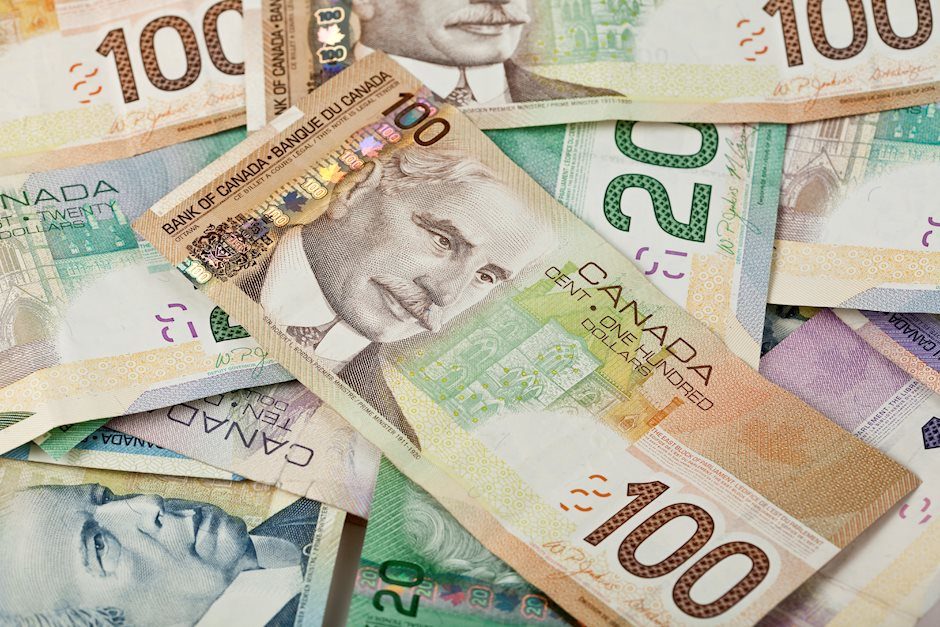USD/CAD remains below 1.3500 due to higher Oil prices, US PCE eyed
- USD/CAD inches lower due to rise in crude Oil prices.
- The WTI price gains ground due to supply concerns in the Middle East.
- The US Dollar holds its position ahead of the US PCE Price Index.

USD/CAD snaps its two-day winning streak, trading around 1.3480 during the European session on Friday. The downside of the USD/CAD pair could be attributed to the commodity-linked Canadian Dollar (CAD), which receives support from higher crude Oil prices. Given the fact that Canada is the largest Oil exporter to the United States (US).
The West Texas Intermediate (WTI) Oil price continues to rise, trading around $75.70 per barrel at the time of writing. This increase is driven by supply concerns in the Middle East. Worries about reduced Libyan Oil supplies and Iraq's plans to curb production are contributing to these supply fears, which in turn are bolstering Oil prices.
The downside for the USD/CAD pair may be limited, as the US Dollar continues to hold its recent gains after stronger-than-expected economic data released on Thursday. However, dovish comments from the Federal Reserve could restrain further upward movement for the Greenback.
Federal Reserve Atlanta President Raphael Bostic, a prominent hawk on the FOMC, indicated on Thursday that it might be "time to move" on rate cuts due to further cooling inflation and a higher-than-expected unemployment rate. However, he wants to wait for confirmation from the upcoming monthly jobs report and two inflation reports before the Fed's September meeting.
Investors await July’s US Personal Consumption Expenditure (PCE) Price Index scheduled to be released later in the North American Session, seeking clues about the future direction of US interest rates.
Canadian Dollar FAQs
The key factors driving the Canadian Dollar (CAD) are the level of interest rates set by the Bank of Canada (BoC), the price of Oil, Canada’s largest export, the health of its economy, inflation and the Trade Balance, which is the difference between the value of Canada’s exports versus its imports. Other factors include market sentiment – whether investors are taking on more risky assets (risk-on) or seeking safe-havens (risk-off) – with risk-on being CAD-positive. As its largest trading partner, the health of the US economy is also a key factor influencing the Canadian Dollar.
The Bank of Canada (BoC) has a significant influence on the Canadian Dollar by setting the level of interest rates that banks can lend to one another. This influences the level of interest rates for everyone. The main goal of the BoC is to maintain inflation at 1-3% by adjusting interest rates up or down. Relatively higher interest rates tend to be positive for the CAD. The Bank of Canada can also use quantitative easing and tightening to influence credit conditions, with the former CAD-negative and the latter CAD-positive.
The price of Oil is a key factor impacting the value of the Canadian Dollar. Petroleum is Canada’s biggest export, so Oil price tends to have an immediate impact on the CAD value. Generally, if Oil price rises CAD also goes up, as aggregate demand for the currency increases. The opposite is the case if the price of Oil falls. Higher Oil prices also tend to result in a greater likelihood of a positive Trade Balance, which is also supportive of the CAD.
While inflation had always traditionally been thought of as a negative factor for a currency since it lowers the value of money, the opposite has actually been the case in modern times with the relaxation of cross-border capital controls. Higher inflation tends to lead central banks to put up interest rates which attracts more capital inflows from global investors seeking a lucrative place to keep their money. This increases demand for the local currency, which in Canada’s case is the Canadian Dollar.
Macroeconomic data releases gauge the health of the economy and can have an impact on the Canadian Dollar. Indicators such as GDP, Manufacturing and Services PMIs, employment, and consumer sentiment surveys can all influence the direction of the CAD. A strong economy is good for the Canadian Dollar. Not only does it attract more foreign investment but it may encourage the Bank of Canada to put up interest rates, leading to a stronger currency. If economic data is weak, however, the CAD is likely to fall.
Author

Akhtar Faruqui
FXStreet
Akhtar Faruqui is a Forex Analyst based in New Delhi, India. With a keen eye for market trends and a passion for dissecting complex financial dynamics, he is dedicated to delivering accurate and insightful Forex news and analysis.

















